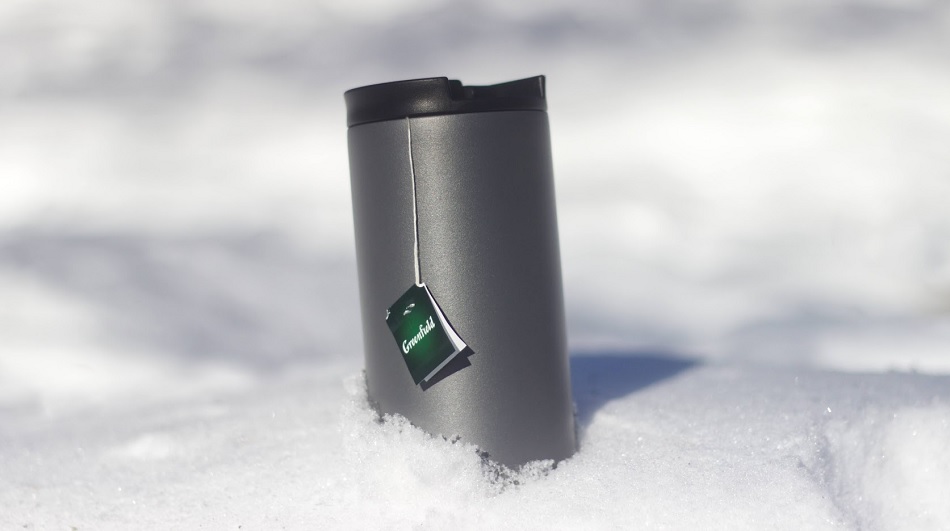The most important factor that should influence your choice of travel mug should be its thermal insulation. A high quality thermal mug will let you enjoy piping hot coffee or refreshing cold water for several hours.
In this guide, we will explain the difference between the many travel mug types, and what factors are the most important when choosing a quality travel mug, water bottle, vacuum flask or other thermal products.
Table of Contents
How Does Thermal Insulation Work?
In a regular coffee mug the drink will almost completely get lukewarm after 15-30 minutes. The hot drink loses its warmth convection – transfer of heat via the wall surface. The inner heat leaves the drink, and the outside heat (or cold) goes in. Which is why if you like your coffee or tea to stay hot for longer, you should invest in a thermal insulation travel mug.
Thermal insulation reduces the external condition impact on the drink’s temperature. A good travel mug should keep freshly boiled water hot for good 5-8 hours. Of course, different models will differ in their thermal performance, and most of them will have their predicted thermal performance in the description.
Whenever you open your travel mug, it loses a bit of it heat. This is the reason why thermal mugs that have dedicated openings for drinking are the best for keeping your coffee or tea hot for longer. You will not have to open them entirely to take a sip, thus not letting the heat escape. Read more about the best travel mugs in our review: The Best Thermal Mugs Tested.
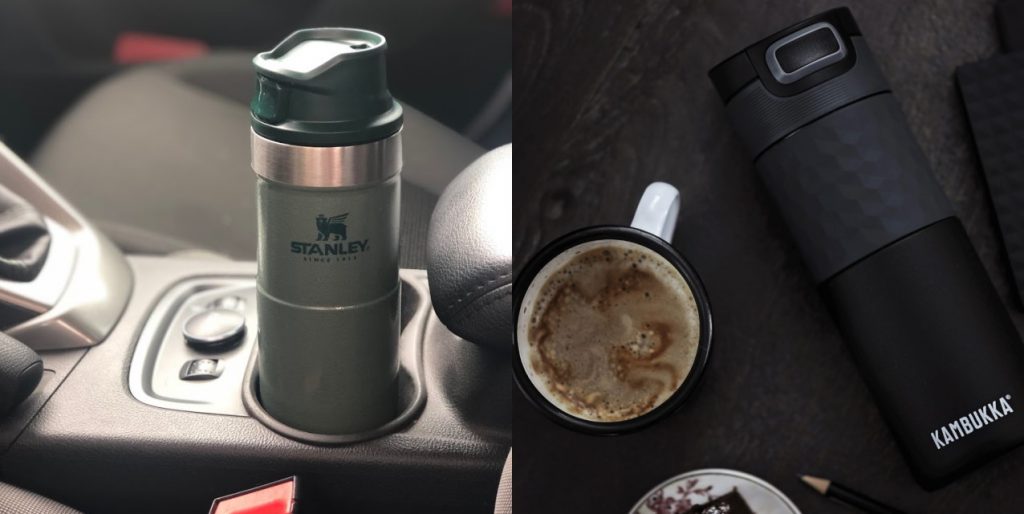
How Travel Mugs Are Made
Travel mugs use thermal insulation to keep your drinks hot (or cold). To achieve good thermal insulation, almost all of them use double-wall insulation construction. To keep the inner container from touching with the outside of the mug and conducting heat out of the drink, these mugs are made made with at least two separate walls. The outside wall is completely separate from the inner container.
Even though almost all travel mugs use double wall insulation, the construction can differ between them. The main difference is in what’s filled between the walls. This factor can drastically change the thermal performance of the mug, so it’s important to know what you’re buying. These are the three most popular types of insulation.
Double Wall Construction Without Insulation
The easiest double-wall construction simply does not have any insulation between the walls. This is the most basic way of making travel mugs, and it can be found only in the most inexpensive products. Its main drawback is the heat retention – most of these travel mugs can keep the drink warm for around 1-2 hours.
It uses double-wall construction to keep the inner and outer walls from touching and conducting heat. Because of that, this way is used to not only make stainless steel travel mugs, but also double-walled ceramic coffee mugs and plastic or glass drink tumblers.
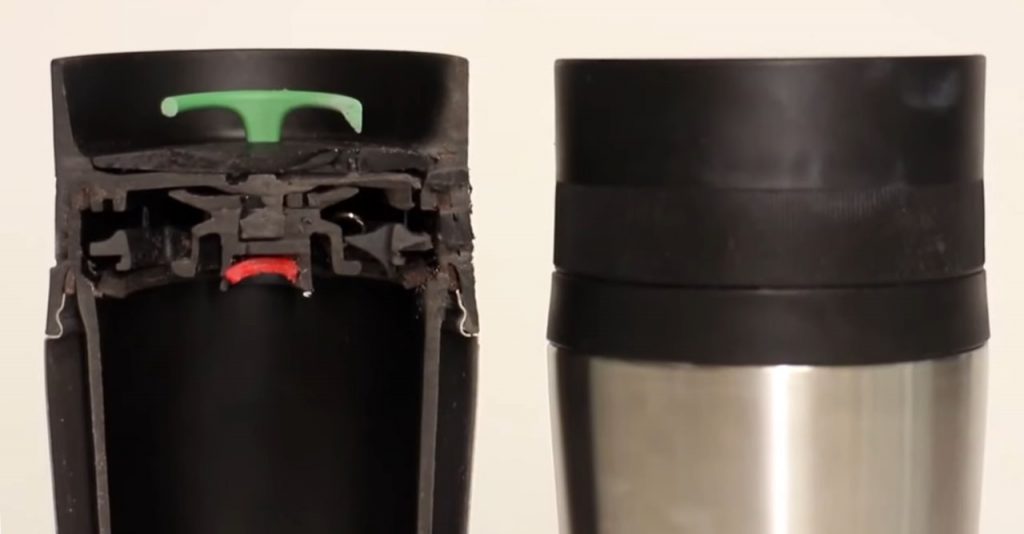
Between the wall there is no insulation – only air. This construction does not keep the drink warm for as long as other methods, because air can cause convection, making the heat leave the mug through the walls. However, it is a good and inexpensive option for cold drinks. In addition, it will keep your hands from burning if you hold a mug full of hot coffee.
This thermal mug technology can be considered all but obsolete, because vacuum insulation is more affordable than ever. It is actually pretty hard to find a brand new thermal mug without any insulation nowadays.
Foam insulation
One step higher in the travel mug hierarchy resides the foam insulation. Instead of air, the space between the both walls of the mug is filled with foam. It is a simple technology and it can be found in the most inexpensive travel mugs.
In addition to lower manufacturing costs, this insulation method takes less space. Travel mugs with foam insulation are generally smaller and than the vacuum-insulated ones. As a drawback, however, they can keep the drink warm only for around 2-4 hours.
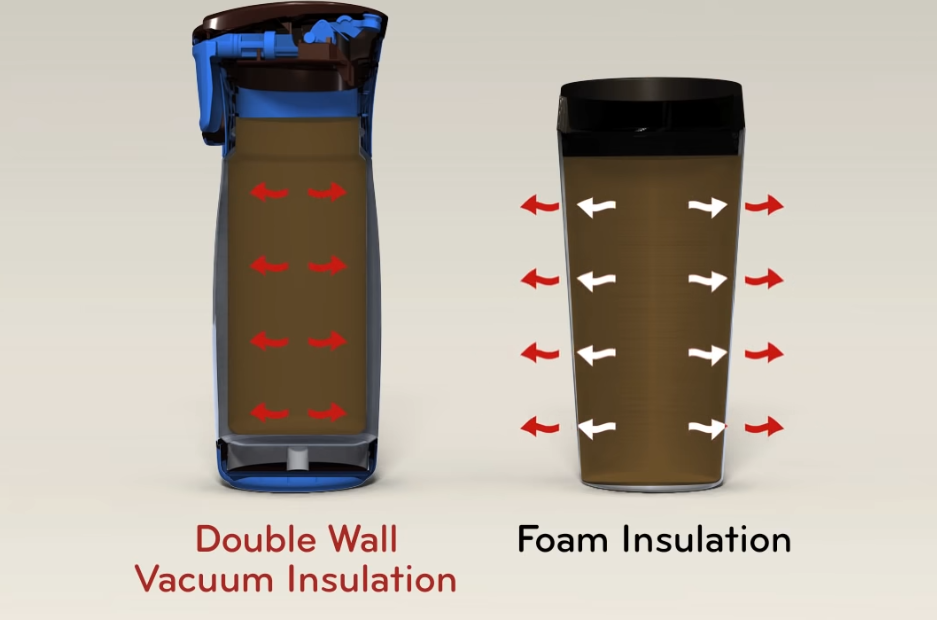
Vacuum insulation
This is the best kind of thermal insulation, and most of the premium travel mugs nowadays use exactly this method. During manufacturing, all air between the inner and outer wall has been removed, thus creating vacuum. Because there are no air particles, convection has also been eliminated. And no convection means that heat does not escape through the walls. Outside environment doesn’t affect the temperature of the drink as much, and these travel mugs can hold its heat for seveal hours.
This technology was invented in 1892 by Scottish chemist James Dewar, and the first thermal flask was created in Germany in 1904. In addition to vacuum flasks, travel mugs and bottles, this technology is also used in construction, medicine and science. In the recent years, this technology has become much cheaper to produce, and double-walled vacuum travel mugs are much more affordable nowadays.
Of course, it has some drawbacks as well. In addition to being a bit more expensive than foam-insulated mugs, they are also a bit larger and heavier. But they are a good compromise for the thermal performance. Vacuum-insulated travel mugs can keep your drink hot for at least 5 hours, with some even reaching the 24 hour mark. In addition, they can keep your drink cool for 8 to 48 hours, depending on the model.
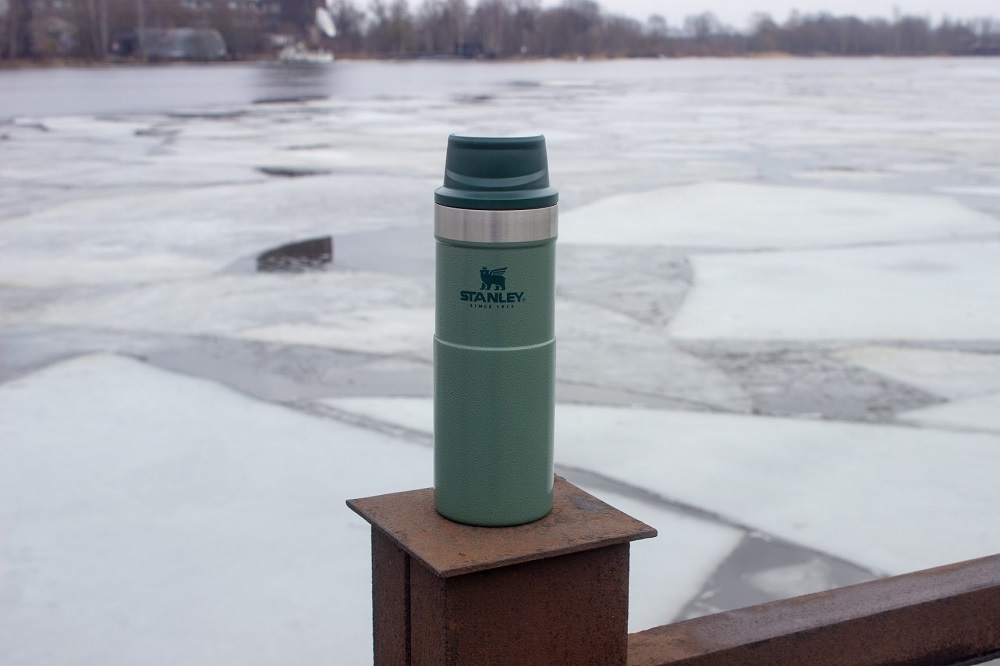
Other factors
Even though all of the travel mugs that you can buy in our store are made with vacuum insulation, you might have noticed that some manufacturers promise only 5 hours of heat retention, while others give much more generous numbers? There are several factors that can affect the thermal performance.
Construction
Not all vacuum flasks are created equally. The more space there is between the walls, the lower the chance of heat conduction. That’s why bigger and bulkier travel mugs keep the drink warm for longer. Of course, they are bigger and heavier, so it’s often not the best choice for day-to-day practicality. That’s why you have to decide – do you want a compact and easy to use mug that will keep your drink hot for some hours, or a big and heavy one that will do that for much longer.
Lid
Double-wall vacuum insulated thermal mugs can keep the temperature without much issue, but there is one thing none of them can get around. Most of the heat loss happens through the lid – you can test it out yourself by touching it. It will be warm, which means that it conducts heat out of the mug. Most of the lids are made from plastic, and they have several moving parts and openings that let the heat out.
Insulated water bottles usually have a smaller lid, and it can keep the drinks warm or cold for longer than travel mugs. On the other hand, you have to remove the lid from water bottles completely whenever you want to take a sip, and that brief moment is enough to let a massive amount of heat escape. Thermal mugs with push-button lids are the most practical for avid tea or coffee drinkers, because after taking a sip they immediately close. In addition, you can drink from them, using just one hand. That makes them a very convenient choice for drivers.
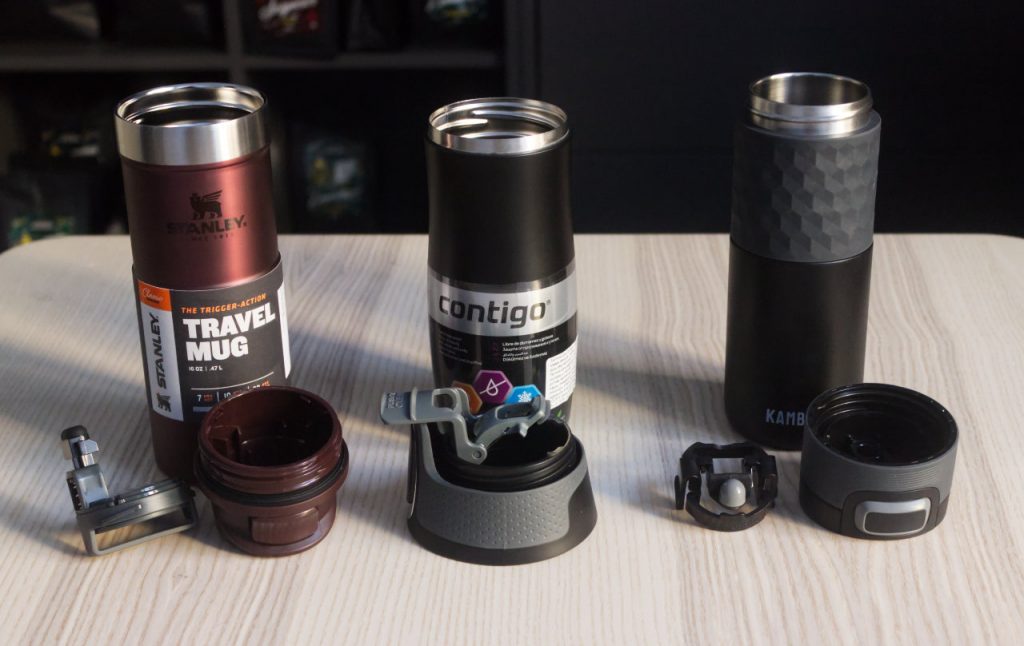
Conclusion
There are a lot of factors to consider when choosing your next travel mug. While some models are the ultimate champions of heat retention, keeping the drink hot for more than 24 hours (for example, Insulated Water Bottle Cheeki 34oz), others trade that for more convenience in daily use. Our favourites include Kambukka Etna, Contigo West Loop and Stanley Classic Trigger-Action. Read our review where we thoroughly tested and compared their features and real world thermal performance – The Best Thermal Travel Mugs Tested.
Remember that the features and size should match your use case. We have found out that we usually finish the drinks in smaller travel mugs way before they have had the chance to become lukewarm. On the other hand, a larger vacuum flask, bottle or travel mug will let you bring enough hot tea or coffee for you and your friends or family all day long.

